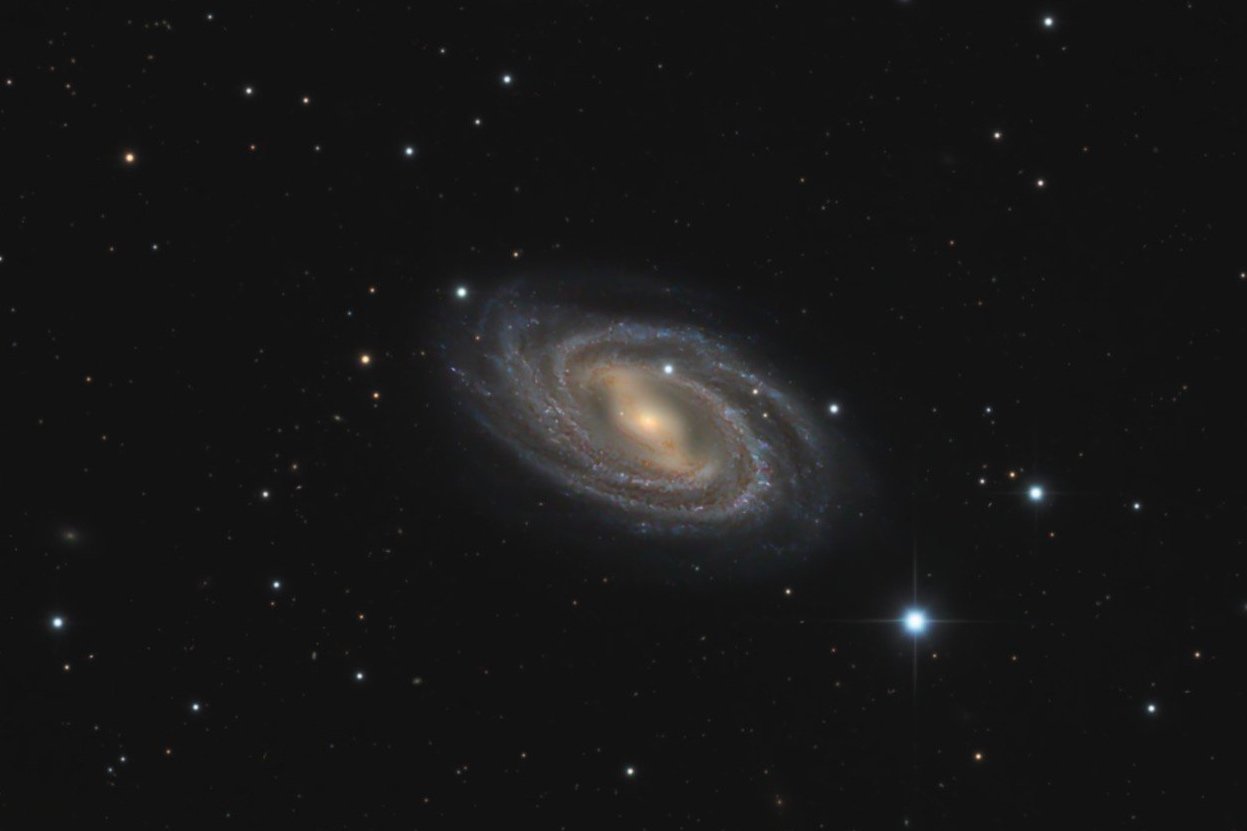
Images
M11
Messier 11, also known as the Wild Duck Cluster, is one of the richest and most compact open star clusters known, located in the constellation Scutum. The cluster is approximately 6,200 light-years away from Earth and has an estimated age of around 220 million years. It contains thousands of stars, many of which are brighter and younger than our Sun.
M17 | Sh2-45
Messier 17, commonly referred to as the Omega Nebula or Swan Nebula, is an emission nebula in the constellation Sagittarius. Spanning approximately 30 light-years in the longest direction, Messier 17 is located roughly 5,000 to 6,000 light-years from Earth. It is one of the most massive molecular clouds in our Galaxy.
M51 | Arp 85
Messier 51, also known as the Whirlpool Galaxy, is one of the most striking and well-known galaxies in the night sky. What makes it special is the interaction with nearby galaxy NGC 5195, distorting its otherwise symmetric spiral pattern. This gravitational pull has triggered waves of star formation in the Whirlpool's arms, lighting them up with clusters of hot, young, blue stars. Here in a long >60h exposure.
M58
Messier 58 is one of the brightest galaxies in the constellation Virgo. Located roughly 62 million light-years from Earth, M58 is the most distant Messier object. The core contains high rates of star formation, known as starburst activity. It also houses a supermassive black hole around 70 million times the mass of our Sun.
M89
Messier 89 is an elliptical galaxy located in the Virgo Cluster, within the constellation Virgo. M89 is approximately 50 to 55 million light-years away from Earth and has an apparent magnitude of about 9.8 to 10.73. The galaxy contains around 100 billion stars and over 2,000 globular clusters.
M53
Messier 53 is a globular cluster located in the constellation Coma Berenices. It is one of the most distant globular clusters associated with the Milky Way, lying approximately 58,000 light-years from Earth. M53 is often observed alongside its neighbouring globular cluster, NGC 5053, which lies nearby in the sky.
M67
Messier 67 is an open star cluster located in the constellation Cancer. It is one of the oldest known open clusters, with an estimated age of around 4 billion years, making it significantly older than most other open clusters in the Milky Way. M67 is situated approximately 2,700 light-years from Earth and contains over 500 stars, many of which are similar in age and composition to the Sun.
M109
Messier 109 is a barred spiral galaxy located in the constellation Ursa Major, approximately 83.5 million light-years from Earth. It is one of the brightest galaxies in the Ursa Major Cluster. M109 is notable for its prominent central bar structure. The galaxy has a magnitude of about 9.8. It spans roughly 180,000 light-years in diameter, making it slightly larger than the Milky Way.
M48
Messier 48 is an open star cluster in the constellation Hydra, the Water Snake. The cluster is situated approximately 1,500 light-years from Earth, making it one of the clusters closest to our solar system. M48 contains roughly 80 stars, most of which are young, hot, blue-white main-sequence stars.
M37
M37 is the brightest open cluster in the constellation of Auriga. Many of its 500 stars are fairly young bright blue stars, but the big star in the center (HD39183) is a yellow giant. M37 is photographed here during two consecutive full moon periods in December 2024 and January 2025 respectively.




















